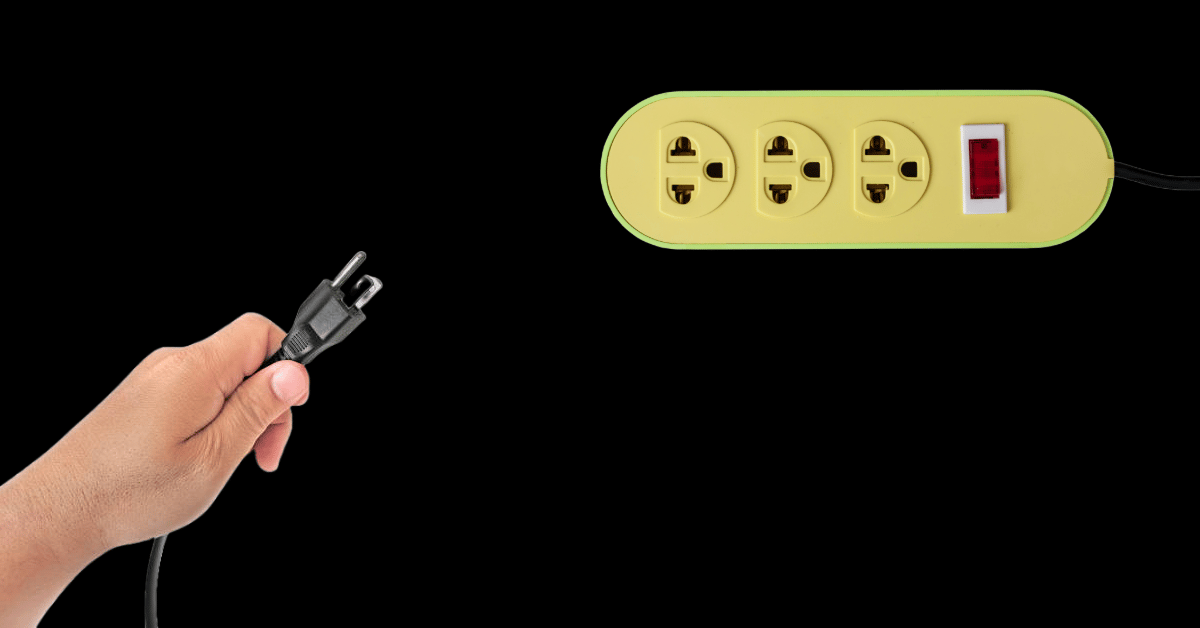Together with

Patagonia isn’t in the business of selling jackets.
They’re telling a story about saving the planet. LEGO doesn’t just sell plastic bricks. They’re opening up a world where your imagination is the main character. And Liquid Death isn’t just selling water. They’re selling rebellion—and giving you permission to break the norm. That’s the thing about brands that last. They don’t just market products. They build stories we want to believe in, retell, and even join.
- Charlotte Ellis, Editor ♡
PRESENTED BY PLANABLE
Humor converts. Here’s how to get it right 👇
You feel the pressure to create campaigns that perform.
You've got to cut through the noise, prove ROI—hopefully even go viral. So when that post you thought was hilarious gets crickets (or worse, hate comments) you're left stumped.
In a Planable poll, nearly 8 in 10 people said a brand’s humor made them try or buy something. The hard part? Figuring out how to make funny content that actually lands.
Planable's Humor in Marketing Playbook shows you how to:
✅ Use humor to grab attention and drive sales
✅ Make your content more memorable, shareable & fun
✅ Pick the right humor style for your brand (without risking your rep)
Find out how to do “funny” the right way 👇
WHAT’S HAPPENING IN MARKETING TODAY?
Snapchat charges for photo storage, Reddit shares Holiday Guide & Spending expected to be down this Xmas

Snapchat is about to charge users for storing their old photos and videos.
Bad news for those who have had the app for one million years and frequently use it to revisit old memories. Now, if you have more than five gigabytes stored, you will need to pay to keep them available. The move has obviously been widely criticised, with users calling the platform “unfair” and “greedy.”
Snap has responded in the most pas-ag way possible, acknowledging that it's "never easy to transition from receiving a service for free to paying for it" - but suggesting it's "worth the cost" for users. Lol thanks.
More than one trillion Memories had been saved on the app in the last decade. The feature has always been integral to the app, but the transition is inevitable, according to Snap. "In an era where we post less, but save more, this is an evolution of messaging and social media platforms."
Reddit publishes its Holiday Marketing Guides.
Reddit is the second most visited site in the U.S., with over 110 million daily active users. If they’re talking, I’m listening. Particularly when it comes to trends, or guides. For like, anything really. So, if you’re thinking about building a Reddit strategy, today's is your day. Because the platform has released not one, but two seasonal playbooks and guides to help you.
First, Reddit’s “Best Practices for Dynamic Product Ads” guide, and second, “Campaign Best Practices” checklist. Both are pretty self-explanatory. And while Reddit campaigns may not be effective for all brands, you may just find more potential there than you expect. Just read it.
Consumers look to cut holiday spending as living costs rise.
As the holiday season approaches, consumers are approaching with restraint. According to eMarketer, 27% of US adults expect to spend less from October to December this year. Hybrid shopping is also becoming a new normal. Nearly 40% of US shoppers will split their purchases evenly between online and in-store. Just 8% will shop exclusively online and 8% exclusively in-store.
It seems holiday sales gains will be limited, meaning retailers chasing growth during the make-or-break season will need to drive and reward value-seeking behaviour. In other words, get those sales going, boy.
-Sophie Randell, Writer
DEEP DIVE
Storytelling as a balm for cultural collapse

Saturday, I wrote about the cultural free fall we’re in: how context is collapsing, language is unravelling, and meaning itself is dissolving in front of our freaking eyes.
That’s the environment brands are trying to speak into right now—a noisy, contradictory, nihilistic churn. It’s literally like screaming into the void. We have officially reached void status.
Which is why, I believe, it might be time to revisit the oldest trick in the human playbook. Once upon a time, a much quieter time, we sat around fires and told stories, stories that spanned generations through the medium of myth.
When the world goes unnatural, when technology races ahead of our ability to process it, we return to what we know best. Stories. Myths. Philosophies.
The primal frameworks we used, long before Wi-Fi and algorithms, to make sense of chaos.
Myths were humanity’s first meaning-making devices. They explained the stars, justified rituals, mapped morality. Their purpose was not only to entertain but to orient people inside the unknown. And even now, they still do.
Because marketing itself has always borrowed from myth.
We don’t often say it out loud, but brands have always been myth-makers.
The Hero’s Journey is everywhere in advertising. The customer has a problem, the brand guides them, the story resolves with triumph. Yaaaay.
Archetypes dominate brand positioning. The rebel, the caregiver, the ruler, the joker.
Every startup writes an origin myth. A eureka moment in a garage, an underdog taking on giants, a promise to “change the world.”
This isn’t a coincidence. Marketing’s job has always been to give people stories they can see themselves in. It’s mythmaking, but make it commerce.
As I said in my last article, there’s a very real danger for brands right now in becoming nothing more than cultural noise—a quick dopamine hit in the feed, forgotten before the next scroll or swipe.
But if we take mythmaking seriously, I believe there’s a bigger role available. One where brands don’t only tell their own stories, but they anchor the conversations that actually shape society.
Myth is communal, shared across fires, temples, marketplaces.
The power is not in the story itself, but in how those stories became scaffolding for dialogue, identity, and shared meaning.
Brands have the same opportunity. Done right, a brand story can become a stimulus for conversation, debate, and even collective imagination. It can set the stage for people to build ideas around, not just consume passively.
Patagonia’s activism around climate change isn’t just marketing; it anchors a cultural conversation about responsibility. Lego cultivates creativity as a social practice. Even Liquid Death, silly as it may seem, turned “canned water” into a rebellion myth that people riff on together.
In today’s cultural context where language melts into nonsense, trends burn out in 24 hours, and nothing feels solid, myth offers something radical: coherence.
A narrative arc. A sense that the world (or at least one tiny part of it) makes sense.
That doesn’t mean brands need to start writing literal fables. It means grounding their work in the deeper structures humans are wired for:
Tensions that feel real
Characters we can root for
Stories that offer resolution, hope, or clarity when everything else feels chaotic
The opportunity here?
I know the temptation right now is to join the churn.
To meme, to vibe, to dissolve into the nonsense just to feel relevant. But there’s another path: build stories people actually want to return to. Offer something durable. Speak plainly. Create campaigns with arcs, not just moments.
Because when culture is collapsing into fragments, myth is more than marketing: it’s a balm. It’s a reminder that even in chaos, there are stories worth holding onto.
-Sophie Randell, Writer
TREND PLUG
The perfect sound for crashing out

This trend comes from a Twitch clip of popular streamer IShowSpeed, known for his loud, unfiltered personality.
In the clip, Speed screams the ABC’s while making unhinged banging noises, originally captioned: “when your fav character is so cute you start tweaking every time you see them.” The sound quickly escaped anime edits and has since evolved into a mainstream way of showing when life fully makes you crash out.
The sound is going viral for everyday situations where reality feels a little too overwhelming. From stressing about bills, to falling behind on assignments, to that awkward moment when you’ve submitted a bad essay and have to face your professor the next day.
How you can jump on this trend:
Use the audio to exaggerate a moment when life comes at you hard. The angrier and more random the “crash out” feels, the funnier your post will be. Pair it with a caption that captures a situation you’d rather scream through than face.
A few ideas to get you started:
When I see my to do list and have 10 videos to edit
When I see a brand not using social media for their marketing
Opening my laptop to see what I’ve missed after my week long holiday
- Bella Vlasich, Intern
FOR THE GROUP CHAT
😂Yap’s funniest home videos: The sound she makes is what gets me
❤How wholesome: Post Malone is just the best
😊Soooo satisfying: Kinetic sand 4 life
🍝What you should make for dinner tonight: Chicken Quesadillas
ASK THE EDITOR

How important are reels compared to other content types on Instagram? - Jono
Hey Jono,
If your goal is viewership and growth, reels are the most effective content format for that right now. Stories are great for building community with people who are already familiar with your brand. Static posts or carousels are a good way to go into topics more in depth. They're especially effective for educational content. But reels are best for reach, sharing and engagement as video content allows you to grab attention and tell a story in a short timeframe. So if you're going to prioritise what content you create, I would put reels first, then stories, and static posts last.
- Charlotte Ellis, Editor ♡

